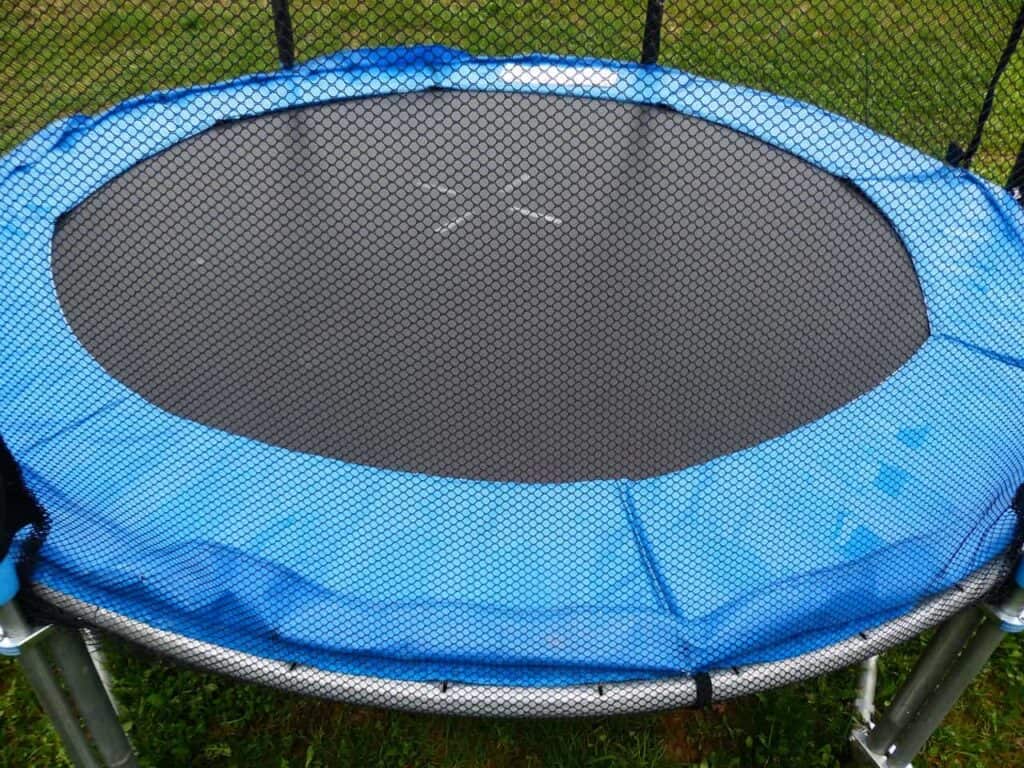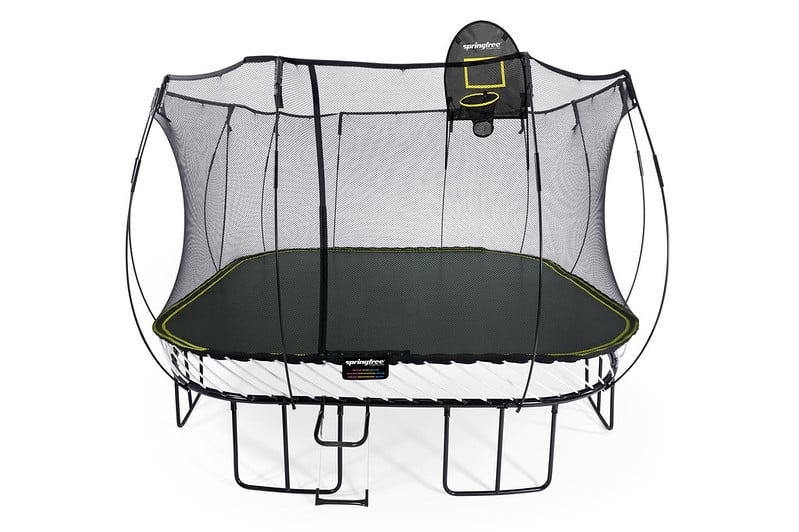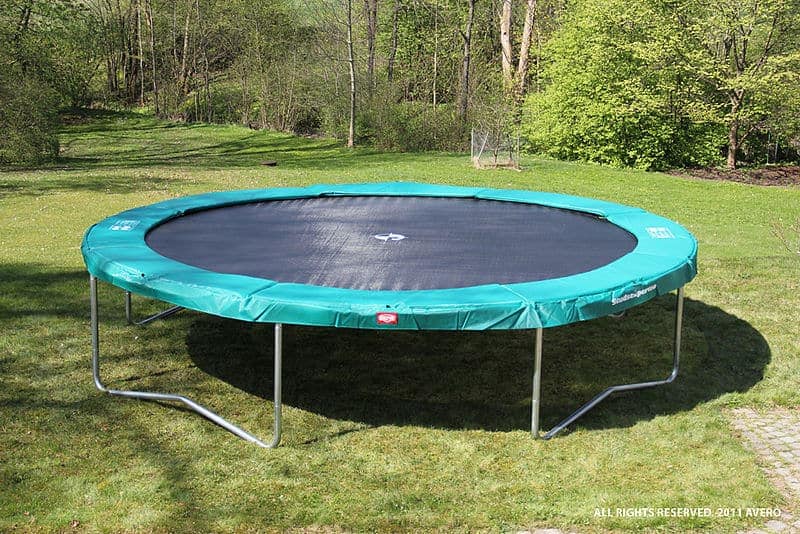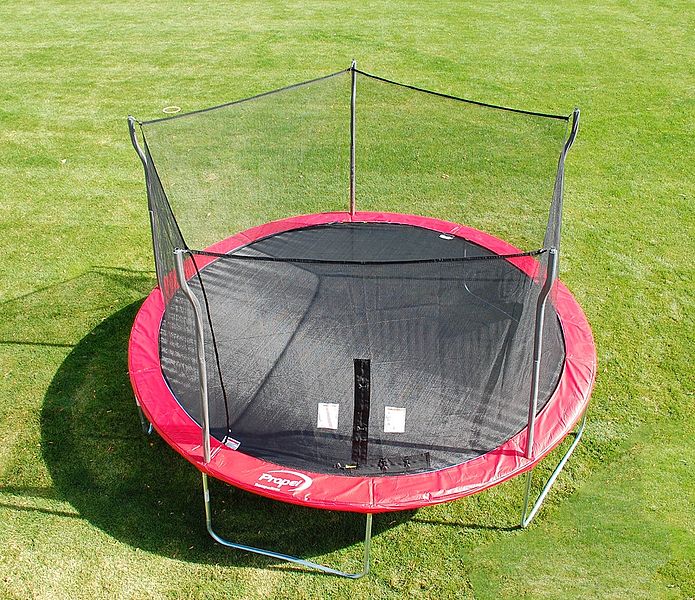Exploring the trampolines market might get you all confused — there are many trampoline sizes and shapes, and there are many questions that need to be answered.
So, how do you choose the best trampoline size to guarantee tons of fun for you and your family while keeping yourself and them safe? We’re about to share the answer with you now!
So, without further ado, here are the things you have to consider if you want to buy the right trampoline size for you.
What Size Trampoline To Buy – Things To Look For When Buying a Trampoline
The Number of Kids Using It
Considering how many kids will use the trampoline is crucial. If you intend to entertain your kids and their friends at a time, go for a larger trampoline.
On the other hand, a smaller trampoline will be just enough if your kids follow the one-at-a-time rule.
Available Space
The physical space you have in your yard is the main factor determining your trampoline size and shape. You want a clear area around, above, and below the trampoline to avoid any accidents.
You also want to have a clear area of 5 foot all around the trampoline. For example, if you’re getting a 10 foot round trampoline, you need a clear, level space of about 20ft diameter. As for a rectangular trampoline, if its dimensions are 10 ft x 15 ft, for example, you want to clear an area of 20 x 25 ft to place it on.
If you don’t have very much space, look for another area in your yard where the trampoline could fit better. Also, unless you have the time to dig trenches or level out your yard, the part you put the trampoline on should be flat.
Different Trampoline Shapes
Trampolines come in different shapes: round, rectangular, oval, and square.
1. Round trampoline

The most popular trampoline shape people get at home is round, and that’s for a good reason. Round trampolines are generally the cheapest of all shapes, making them a good option for families with children.
And because the circle is such a strong structural shape, the trampoline’s frame may be lighter while still holding up.
The springs distribute their reaction force equally around the trampoline’s perimeter, causing jumpers to naturally gravitate toward the center, making it great for beginners.
Sounds great for one jumper, right? But wait until a lot of jumpers join. If they’re not careful, they might find themselves bumping into each other too often.
So, a round trampoline will be perfect and safe for one kid, but a group of kids on a round trampoline that lacks awareness of how the trampoline works will very probably turn chaotic. However, to avoid this, you need to choose a trampoline of a larger size.
2. Rectangular trampoline
When compared to other shapes, a rectangular trampoline is a winner in terms of the size of its mat. That is why they’re usually used by gymnasts and people who look for both great bounce and safety.
Rectangle trampolines are quite easy to store and transport, which is a huge plus if you want to take them down in cold months or when no one is using them.
A rectangle trampoline has heavier, more solid frames due to its structure that handles the jump force. While this seems good, it makes their portability worse. You may find it a piece of cake to get the help of your friends in picking up a round trampoline and repositioning it.
But with a rectangular design, you get to choose the right spot once because it’s much harder to move after that.
Fun fact: The inventor of trampolines used a rectangular design at the beginning!
3. Oval trampoline
Similar to round one, an oval trampoline makes jumpers drift to its center. However, it offers a larger jumping surface than a round trampoline, but the reaction of the forces surrounding the surface’s edge is nearly the same.
Although an oval trampoline’s frame is thicker and heavier than a round trampoline’s frame, it’s safe to say that an oval-shaped trampoline combines the benefits of both round and rectangular shapes.
4. Square trampoline

There’s a striking difference between square trampolines and circular ones. The springs on either side of a square design don’t react the same way on a circular shape, so it’s easier for jumpers to stay in place.
Square trampolines are perfect for saving up some more space, as backyards are mostly rectangular. If you have a fenced-in area, you can fit your trampoline closer to the fence on either side than you could with a round or oval design.
However, you’ll still have to leave enough space in between to maintain a safety zone, preferably 2-6 feet from any wall or surface.
Trampoline Size Guide
One of the things that you will need to consider when you are buying a trampoline is the size. The size of the trampoline will determine where it can be placed. It also determines how many kids can jump on it at one time. There are various trampoline sizes available in the market, take a look at this trampoline size chart:
| Trampoline size | Trampoline mat diameter (ft) |
| Small | Below 8 ft |
| Medium | 10-12 ft |
| Large | 14-15 ft |
| Extra Large | 16-17 ft |
What Size Of Trampoline Should I Buy?
The answer depends. You have to consider all the factors we mentioned above: the number of jumpers (weight limit!), the space you have in your backyard, the different shapes of a trampoline when getting a trampoline. And its usability and performance depend on all of these factors.
Case #1
In this case, you’re buying a trampoline for a toddler or a preschooler.
Less is more here. Don’t spend your money on a 17 foot trampoline if you’re only getting it for a preschooler that will use it on their own or with a friend. Instead, an average trampoline size of 12 foot will be more than enough.
Case #2
If you’re planning to let all your kids jump on it at the same time or even invite their friends in, the largest trampolines available will be the ideal option, which is usually 14 ft -17 ft in diameter on average.
A large trampoline is also a necessity if you as a parent want to join the fun, too!
How Much Space Do You Need For Trampoline

- If you don’t get a safety net for your trampoline, you have to keep a margin of 8.2 ft all-around your trampoline. So, add 16.4 ft to your total measurements.
- But if you’re going to get a net enclosure, you should consider a margin of only 1.5 ft. So, you need to add a total of 3 ft to your measurements.
Another thing to keep in mind, any fence or wall should be at least 1.5 ft away from the trampoline to avoid any nasty injuries.
| Trampoline Size | Space Without Safety Net | Space With Safety Net |
| 10 ft | 26.4 ft | 13 ft |
| 12 ft | 28.4 ft | 15 ft |
| 15 ft | 31.4 ft | 18 ft |
The Correct Way to Choose a Space for a Trampoline
When it comes to choosing the right spot, there are a couple of things to consider:
No Slopes
Trampolines are meant to be set up on the flat ground because if it’s on a slope, you’ll gravitate to the lower edge of it.
Try to make the trampoline as level as possible. If the ground has a slight slope or is uneven, dig tiny channels into the soil to allow the legs to sink slightly.
Because it’s only the bottoms of the leg frames that should be on level ground, you may find that slightly turning the trampoline reduces the amount of leveling effort required. If, however, the slope is too steep, you may need to cut out a terrace to even everything out.
Soft Ground
To absorb the impact and energy caused by bouncing, the trampoline should be placed on soft ground. Bark or something similar is probably the ideal surface since it is soft and absorbent, provides adequate drainage, and suppresses weeds.
Hard surfaces, such as concrete or tarmac, should be avoided. If this is the only option, a safety enclosure net is required, and soft matting should be placed around the trampoline’s entry area.
You’ll also need some rubber feet to place under the tramp’s U-shaped legs to absorb impact energy.
If you’re going to set the trampoline on grass, be prepared to move it whenever you have to trim the grass underneath it.
Clear Air Space Above

Don’t place your trampoline under a tree to save yourself the trouble of cleaning bird droppings and leaves off of your trampoline.
Not only can that leave you with a dirty trampoline, but the birds above may also let it rain on your kids in the middle of playtime. Yikes!
Also, make sure the place is clear of any washing lines and overhead cables.
View Your House
Before installing the trampoline in your yard, make sure you can clearly view it from the house. A trampoline could be extremely dangerous if misused, so you need always to be able to keep an eye on your children while they play on it.
Clear Surrounding Area
Things like walls, shed fences, climbing frames, swings, or even bikes and toys, should not surround the tramp’s placement area.
Swimming pools, ponds, paddling pools, or any nearby open water must be avoided at all costs (especially if there’s no safety net installed). It’s all fun and games until a child falls from the trampoline into the water.
Not An Exposed Space
While a trampoline is heavy, the safety net can cause a lot of windage by acting as a sail. In fact, the mat itself can also act as a sail, making the trampoline lift off the ground in heavy winds.
Make sure the trampoline is positioned away from the prevailing wind and secure it using a trampoline anchor.
If the area is overly exposed, ensure you secure the entire trampoline frame to the ground, not just the U-shaped legs. If you don’t, it could get separated from the trampoline’s secured legs, allowing the mainframe to be blown away while the leg frames remain fixed.
Now that you know everything about choosing and placing your new trampoline, you can get yourself the right-sized one and make your backyard the place to be!
